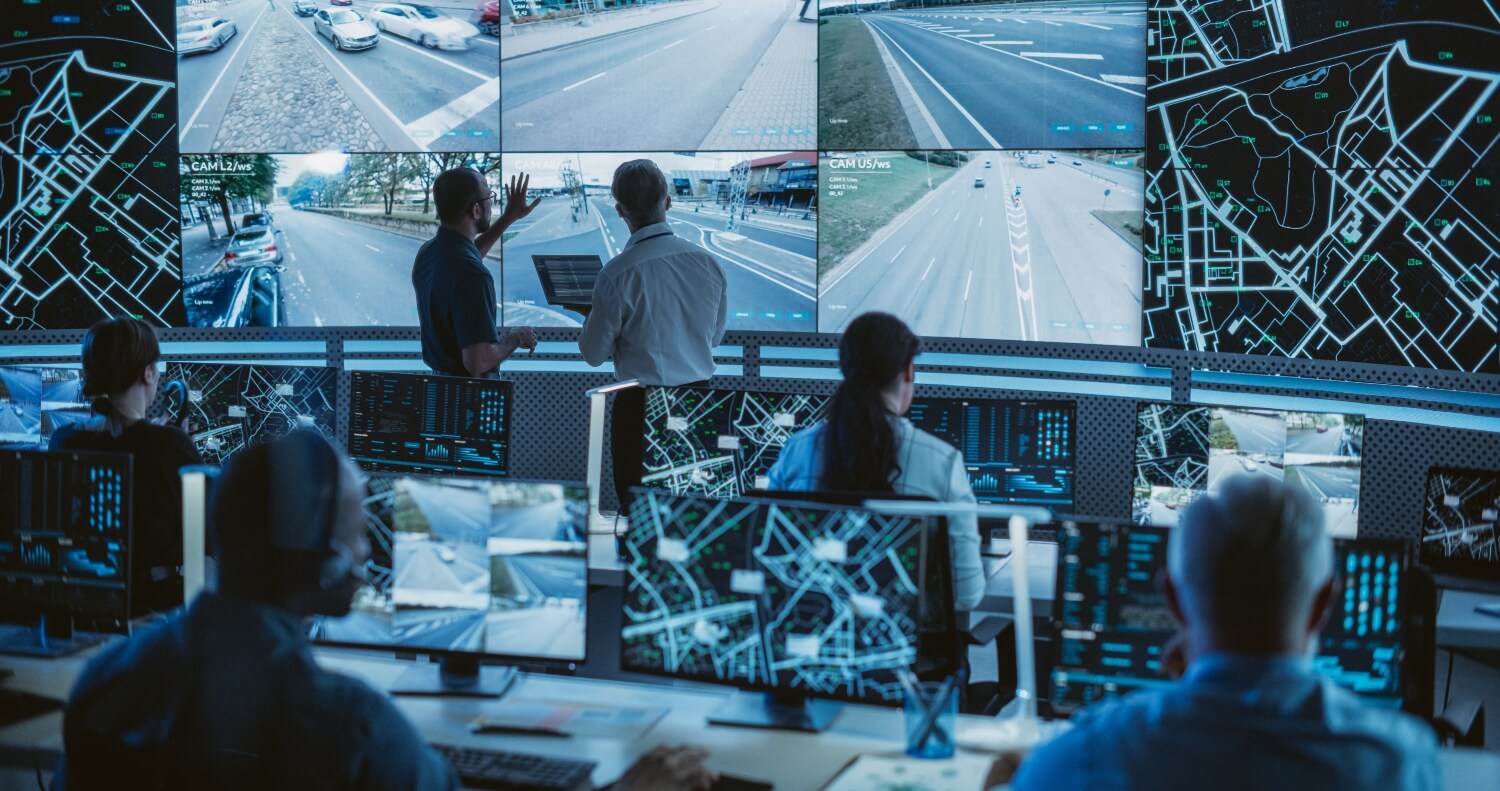Security teams often struggle with slow response times, high latency, and bandwidth overload when relying on traditional cloud-based surveillance systems. Critical incidents can escalate because video data processing is too slow. Edge computing solves this challenge by analyzing surveillance data directly on local devices instead of sending everything to distant servers. This shift enables faster threat detection, real-time alerts, and more intelligent decision-making.
Let’s explore how edge computing enhances surveillance security, covering benefits, use cases, and technical mechanisms that make it a game-changer for modern security infrastructure.
What Is Edge Computing in Surveillance?
Understanding the concept of edge computing is essential to see how it reshapes security operations. Edge computing in surveillance refers to processing video and sensor data locally on network devices like IP cameras, gateways, or edge servers rather than transmitting all raw data to a centralized cloud or data center.
-
Subject: Edge device
-
Predicate: Processes
-
Object: Surveillance data locally
Traditional CCTV systems send continuous streams to a remote data center, causing latency and overloading network resources. With edge computing, each camera or local node performs pre-processing, allowing critical alerts to be generated on-site. This local intelligence reduces reliance on constant cloud connectivity.
Key Characteristics of Edge-Based Surveillance
-
Runs AI-based motion analytics (e.g., facial recognition) on the device
-
Reduces cloud dependency by pre-filtering and compressing data
-
Enables real-time threat detection without latency issues
-
Handles bandwidth constraints by sending only relevant event data to cloud storage
-
Provides autonomous operation during connectivity loss
Organizations adopting edge-based surveillance report up to 60% faster alert delivery and significant cost reductions in bandwidth usage.
How Does Edge Computing Improve Security in Surveillance Systems?
Deploying edge computing in surveillance directly strengthens security measures and operational response.
1. Faster Threat Detection and Response
Edge devices process data close to cameras, allowing AI algorithms to identify anomalies such as perimeter breaches, unattended objects, or unauthorized access in milliseconds. Unlike cloud systems that must relay footage for centralized analysis, edge computing makes decisions on-site.
-
Example: A retail store uses edge-powered cameras to detect shoplifting in under 1 second without sending video to the cloud.
-
Large warehouses reported reducing incident response times by 45% after shifting to edge-based analytics.
This speed is critical for high-risk environments like airports or stadiums, where every second can prevent potential harm.
2. Reduced Network Latency
Cloud-based systems rely heavily on continuous data transmission, causing delays during peak network usage. Edge computing avoids this bottleneck by analyzing footage locally, ensuring sub-second decision-making for security teams.
-
Latency drops from 500–700 ms (cloud) to under 50 ms (edge).
-
Real-time facial matching and crowd monitoring become possible without heavy cloud dependencies.
3. Bandwidth Optimization
Video surveillance generates massive amounts of data. Streaming everything to cloud storage saturates network capacity and inflates storage costs. Edge devices intelligently filter and compress footage, sending only event-based clips for archival purposes.
-
Smart cameras can reduce outbound data by 70–90%, allowing for higher camera counts without infrastructure upgrades.
-
Municipal surveillance systems using edge computing cut cloud bandwidth bills by nearly 50%.
4. Improved Reliability During Outages
Traditional systems fail to process or store video when internet connections drop. Edge-based surveillance operates autonomously, continuously recording and analyzing data locally. Once connectivity resumes, only the necessary event data syncs with the cloud.
-
Manufacturing plants report uninterrupted security coverage even during multi-hour WAN outages.
5. Enhanced Privacy and Data Security
Sensitive data remains on-site rather than being transmitted over public networks. This reduces the risks of interception and minimizes unauthorized cloud access. Edge surveillance also helps organizations comply with strict data protection laws like GDPR and CCPA.
-
Example: Hospitals and banks process camera feeds locally, avoiding exposure of personal identifiable information to third-party cloud providers.
-
Financial institutions report enhanced audit compliance with localized data handling.
Key Technologies Powering Edge Surveillance

These technologies enable surveillance systems to handle complex tasks without centralized cloud computing.
1. AI-Powered Video Analytics
-
Detects objects, behaviors, license plates, and suspicious movements.
-
Runs on-device using optimized machine learning models, such as convolutional neural networks (CNNs).
-
Provides features like loitering detection, facial recognition, and automatic license plate reading in real time.
2. Embedded GPU and ASIC Processors
-
Edge cameras use specialized processors designed for parallel video processing.
-
These chips allow multiple streams to be analyzed simultaneously without external servers.
-
Enables high-accuracy analytics with lower power consumption.
3. Edge Gateways and Micro Data Centers
-
Aggregate and process data from multiple cameras within a facility.
-
Perform distributed computing tasks like object tracking or cross-camera event correlation.
-
Micro data centers act as localized hubs for advanced analytics and storage.
4. IoT and Sensor Fusion
-
Combines audio detection, Ai motion detection, and environmental sensors.
-
Enables multi-modal alerts, such as detecting a breaking window sound while identifying unauthorized entry visually.
-
Supports smart building security with real-time, cross-sensor event management.
Use Cases of Edge Computing in Surveillance
Edge computing enhances surveillance across multiple industries by addressing unique operational needs.
Industry |
Edge Functionality |
Security Benefit |
|
Retail |
Shoplifting detection, queue monitoring |
Reduces theft, improves staff response |
|
Smart Cities |
Traffic monitoring, public safety analytics |
Faster emergency responses |
|
Healthcare |
Patient monitoring, restricted-area protection |
Maintains privacy and compliance |
|
Transportation |
Platform security, luggage threat detection |
Prevents incidents in high-traffic areas |
|
Industrial Sites |
Hazard detection, perimeter intrusion alerts |
Protects workers and assets |
Additional applications include:
-
Stadiums and event venues are detecting crowd anomalies for public safety.
-
Airports are using edge computing for unattended baggage and runway intrusion alerts.
-
Logistics hubs track package movement and prevent unauthorized access.
Challenges of Implementing Edge Computing in Surveillance
While beneficial, integrating edge computing requires addressing technical and operational challenges.
-
Hardware costs: Edge-capable cameras and gateways require upfront investment.
-
AI model updates: Frequent updates are needed across distributed devices to maintain accuracy.
-
Device management: Managing hundreds or thousands of endpoints requires centralized orchestration platforms.
-
Storage limitations: Local devices have limited retention periods compared to cloud servers, necessitating a hybrid approach.
-
Cybersecurity risks: Edge devices must be hardened against physical tampering and remote exploits.
Organizations overcome these hurdles with phased deployments, robust update mechanisms, and layered security controls.
Best Practices for Deploying Edge Surveillance

Effective deployment of edge-enabled surveillance systems requires planning and structured execution.
-
Assess network topology: Identify high-latency zones and potential bottlenecks before deployment.
-
Choose compatible devices: Select cameras with built-in AI chips or ensure gateways support the required processing capabilities.
-
Enable hybrid architecture: Combine on-site real-time analytics with cloud-based historical data processing.
-
Implement robust cybersecurity: Use encrypted communication, firmware integrity checks, and strict access controls.
-
Use containerized applications: Facilitate easier deployment, scaling, and updates of machine learning models across multiple edge nodes.
-
Monitor device health: Set up automated diagnostics to detect and address malfunctioning devices quickly.
Organizations using these best practices report smoother rollouts and up to 35% lower maintenance costs during large-scale implementations.
Frequently Asked Questions
How does edge computing differ from cloud-based surveillance?
Edge computing processes data locally on devices, while cloud-based systems send raw footage to remote servers, causing latency, higher bandwidth usage, and dependence on constant connectivity.
Can existing CCTV systems be upgraded to edge surveillance?
Yes. Adding edge gateways or replacing key cameras with AI-enabled IP cameras can transform legacy setups into edge-enabled surveillance networks without the need for a complete replacement.
Does edge computing improve cybersecurity?
Yes. Localized data processing reduces exposure to network-based attacks, minimizes cloud vulnerabilities, and allows stricter physical access control over devices.
Is edge surveillance suitable for large-scale deployments?
Yes. Distributed edge nodes manage individual zones while sending aggregated data to a central management console, ensuring scalability for extensive facilities.
What is the ROI of adopting edge computing for surveillance?
Organizations save on bandwidth costs, reduce response times, improve loss prevention, and enhance compliance, leading to a 30–50% operational efficiency gain within the first year.
Enhance Security with Edge Surveillance With Pioneer Security
Edge computing transforms surveillance from passive monitoring to proactive security management. By processing data near the source, organizations achieve faster incident detection, robust privacy protection, and operational efficiency without overloading cloud infrastructure. Implementing these systems with the right strategy future-proofs security operations against emerging threats.
To upgrade your surveillance with next-gen edge computing solutions, contact Pioneer Security Team today for a tailored deployment strategy that boosts your security posture.



